|
BULB LOG 43 --- 25th October 2006
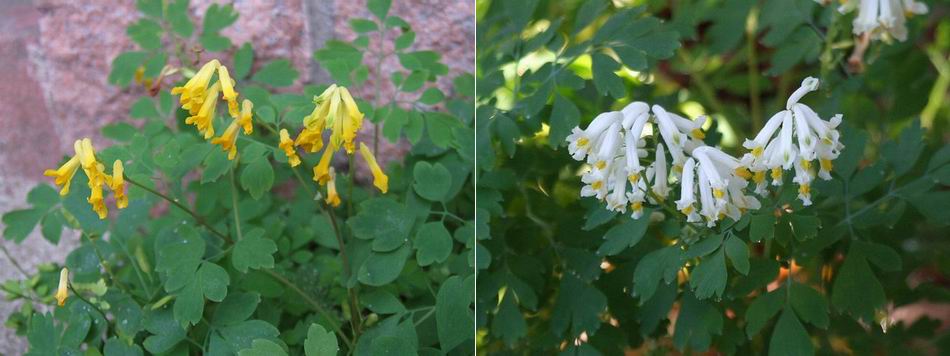
Corydalis lutea and ochroleuca
On a walk around the garden to see what bulbs are in flower I came across what we regard as almost weeds in our garden. To qualify that, my description of 'weeds' are plants that happily self seed themselves around the garden with no intervention from ourselves except to remove them when they seed into areas that may harm other plants. These are not bulbous species of corydalis, they are perennials that have a thin fleshy rootstock and in fact it would seem that they are no longer Corydalis either: they have been moved and are now called Pseudofumaria lutea and P. alba. They seed around freely and as long as we act as referees, ensuring they do not get a hold close to delicate plants, they serve us very well providing interest with their ferny foliage and welcome flowers.
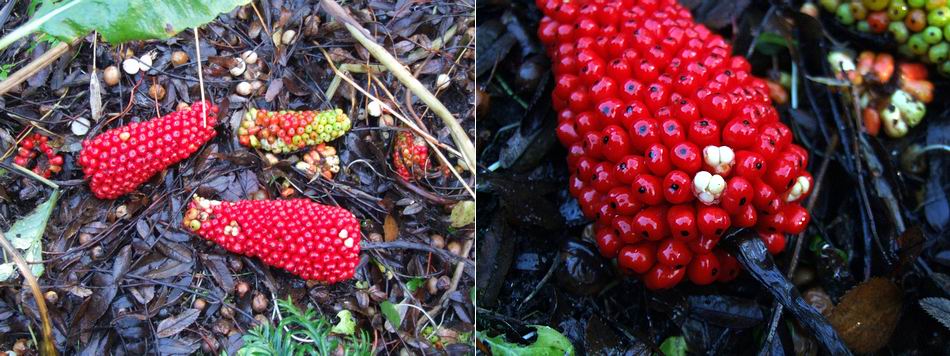
Arisaema seed heads
Arisaema seed heads always provide a striking splash of vibrant colour in the autumn garden and I was interested to observe that at last something has had a nibble at some of the berries. The berries usually just lie where they fall in our gardens left alone by the many thrushes and blackbirds that are attracted in by the sorbus and cotoneaster berries. Perhaps it was a slug that had a wee nibble, exposing the seeds within, showing that each individual berry mostly contains three seeds: multiply that by the number of berries on the head and that is a significant number if they all survive. We now have areas in the garden where there are so many self sown arisaemas that they could fall into the 'weed' category but I have yet to pull any of them up. I am pleased to now have the new updated version of the Arisaema book so I hope to be able to add the correct names to the many arisaema species we have raised from seed.
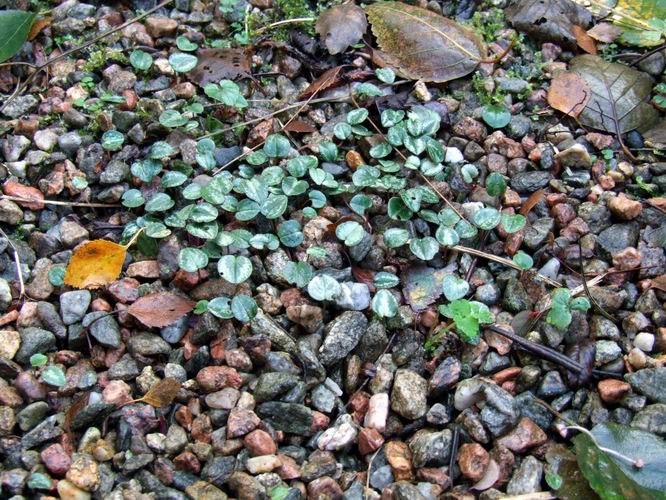
Cyclamen seedling leaves
On my garden walk I was pleased to see many groups of Cyclamen seedlings germinating well. Regular bulb log readers will know that I want to establish more cyclamen in the garden and have been struggling to achieve this quick enough for my liking. My answer to establishing a good colony of any plant has always been to raise them from seed as the seedlings will self select to your garden conditions and local climate. Those that cannot adapt will die out very soon after germinating and those that survive to flower and set seed will produce a population that will be further filtered to our conditions with each successive generation. The challenge is getting hold of a reasonably large amount of seed in the first place and I thank those of you who have sent me some of your spare cyclamen seed to scatter around our garden.
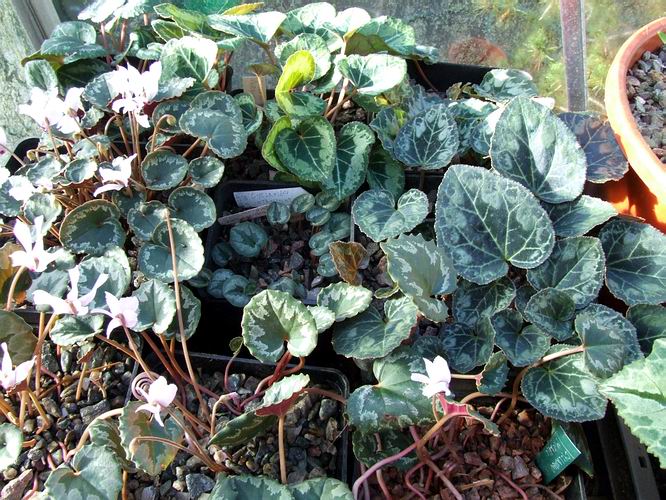
Cyclamen leaves
We do grow some cyclamen under glass but not as many as I would wish as we do not have the space. Many of our pot grown cyclamen are relegated to growing in the lower plunges where the light levels are not ideal and I have a tendency to pay more attention to the upper level plunges. I know that many of you growing in more southerly areas probably grow your cyclamen in shady plunges so as not to scorch or cook them in the summer but you have to remember that when it comes to gardening and where the books say that a plant should be planted in the shade, I always say that all of Scotland is in the shade, so plant it in direct sun. Unlike other bulbs which increase by splitting up or producing offsets, cyclamen corms just get bigger with each year so need bigger pots and this does not fit in with my current regime of growing bulbs in smaller pots so that I can accommodate more variety.
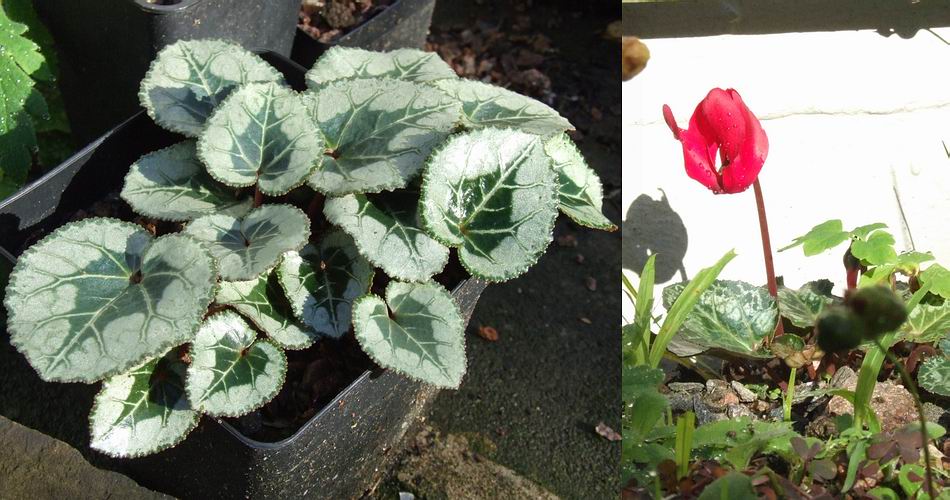
Cyclamen persicum cultivars
A few years ago we bought some Cyclamen persicum cultivars which I planted outside, mostly in a fish box trough. Two thirds of the ones in the trough have not survived as they got too wet last summer (2005) and rotted off but a few have survived like this one with its wonderfully marked leaves - survivor from the trough which was transferred to this pot in 2005 and has just sat around on the slabs since then. The one with the bright red flower which I planted in a narrow south facing bed at the bottom of a wall is also growing well.
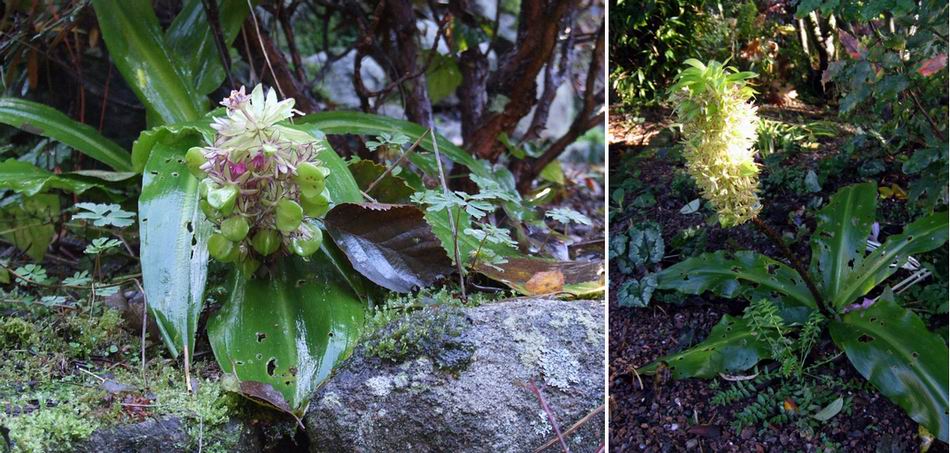
Eucomis biflora
Do you know how there are certain plant names that you just have a mental block with and can never remember their names - well this was one of mine. I could never remember the name Eucomis until I applied my guaranteed method to remember plant names that is to find out the meaning or derivation of the name. Eucomis comes from the Greek eu good and kome hair referring to the fine tuft of leaves that sits at the top of the flower spike like a good head of hair - now I will never forget. Being dyslexic I revert to this method all the time to help me remember words, it also helps me to spell them but not always successfully - that is why Maggi has to go through my log each week to correct all my spellings for you. I cannot rely on the spell checker because it throws up words that are not even close to the one I am looking for - a recent thread on the forum has highlighted the often hilarious results. The point of showing the Eucomis was to show that, after years of having a single plant in the garden which never
produced seed now having introduced another plant we have got some seed pods which hopefully will contain some good seeds. I am not sure if this is the result of bringing in another plant, which is planted some distance away or the result of the much warmer temperatures we are experiencing.
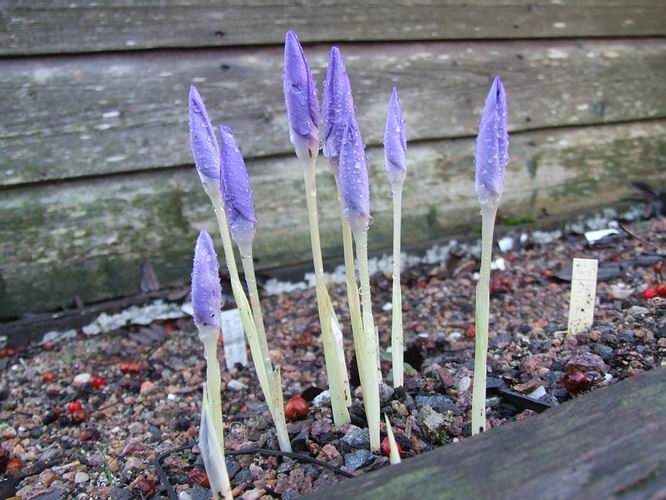
Crocus banaticus buds
A pot of Crocus banaticus, in one of the sand plunges, is waiting for a bit of warmth to open its buds which are sitting there covered in water droplets just now.
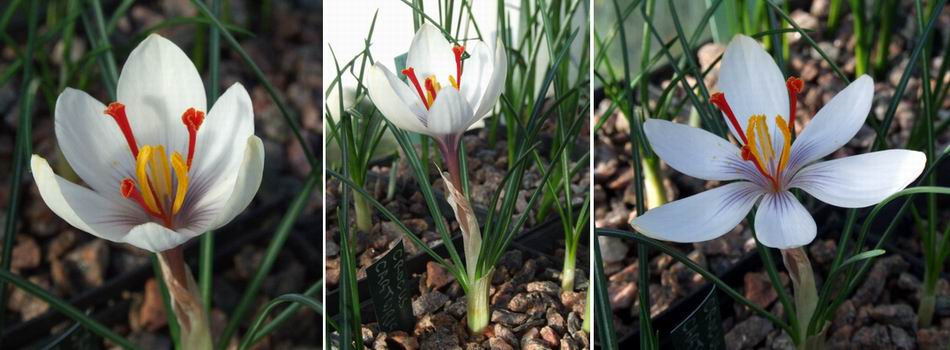
Crocus cartwrightianus
Moving into the glasshouse we have a Crocus cartwrightianus in flower. It is a close relative of the saffron crocus, C. sativus which is often thought to be an extreme selected form of Crocus cartwrightianus. I like them both but at least I can flower C.cartwrightianus on a regular basis. I had a thought about C. sativus - does any one know if the commercial growers get the corms to flower every year or do they flower well one year then take a few years to get back to flowering size again?
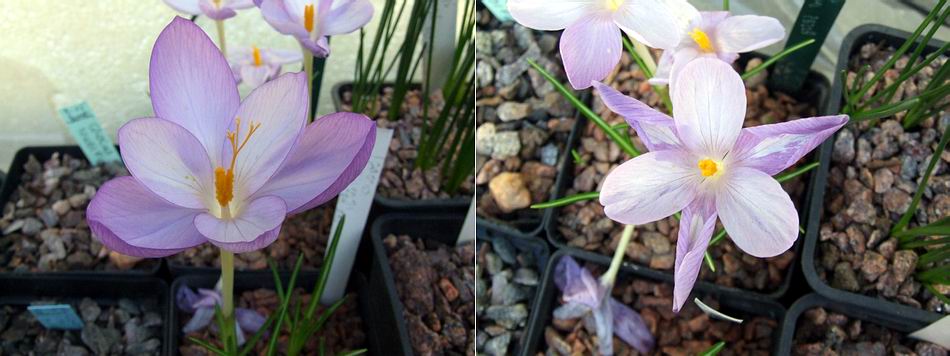
Crocus goulimyii
Two forms of Crocus goulimyii that I got from Tony Goode, a nice dark well rounded form on the left and the one on the right half shuts its outer three floral segments as it is going over giving it a bizarre look.
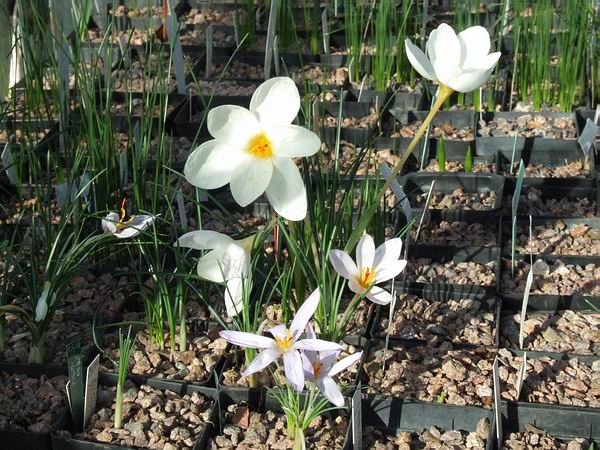
Crocus niveus and pallasii
A giant Crocus niveus flower towers over the delicate C. pallasii. This picture also shows the mass of 7cm square plastic pots I can fit into a relatively small space so I am able to grow a wider range of plants.
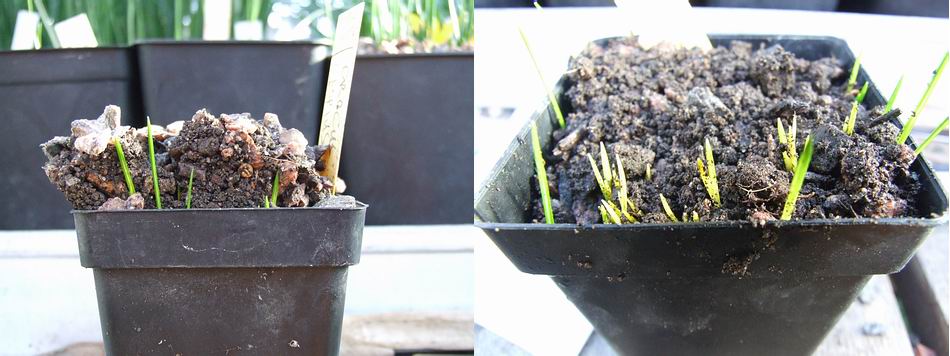
Crocus caspius seedlings
This is not the seed of Crocus caspius that I sowed a few weeks ago but the pot I sowed at this time last year, coming into growth for its second year. There are so many seedlings in the pot that instead of pushing their way through the compost they have combined to push the compost out of the pot. A gentle rake with a pair of forceps and a tap on the bench soon sorts out this problem but I had better mark this as priority case for next summer's repotting.
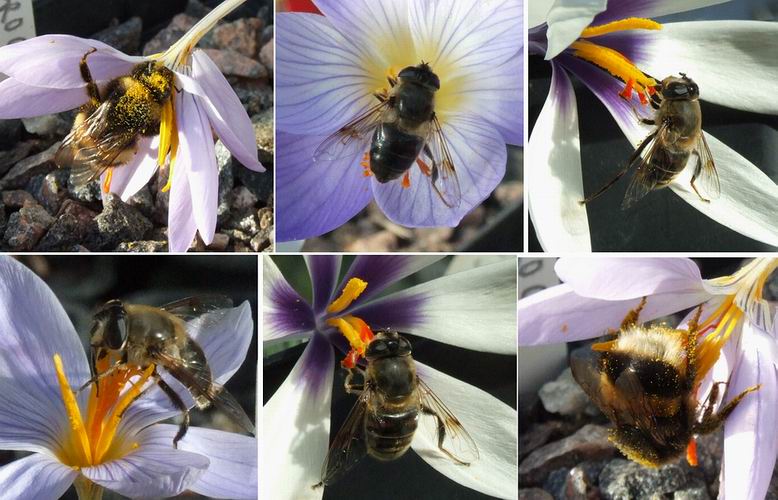
Pollinators
Even though there is plenty of help with the pollinating when the sun does shine, remember to use your paint brush as well to ensure you get a good seed set so you can increase your own stocks as well as sharing the seed with friends and the Seed Exchanges. Remember the deadline of October 31st for donating seed to the SRGC Seed Exchange.
^ back to the top ^
|

